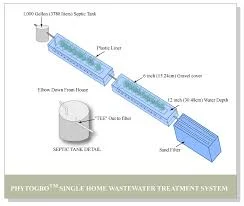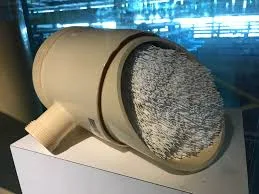Definition:Filtration system sizing involves selecting a system that can handle the desired flow rate and achieve the required level of filtration for a specific tank volume.
Click the Translate button(see right) on this post to set your Own Language to understand more perfectly!!
Filtration System Sizing Calculator
Continue Definition:
Filtration System Sizing
Filtration system sizing involves selecting a system that can handle the desired flow rate and achieve the required level of filtration for a specific tank volume. Here's a breakdown of the key factors and equations:
1. Tank Volume (Tv) - in Gallons
This represents the total volume of the liquid you want to filter.
2. Desired Flow Rate (Q) - in Gallons per Hour (GPH)
This specifies how much liquid you want the system to process per hour. It's crucial to consider peak flow rates if your application involves fluctuating flow.
3. Filtration Capacity (Fc) - Percentage
This indicates the percentage of contaminants the filter removes from the flow stream. For example, a 75% Fc filter removes 75% of particles at its specified micron rating.
Key Equations:
Filtration Time (t):
This determines how long it takes to filter the entire tank volume at the desired flow rate.
t (hours) = Tv (gallons) / Q (GPH)
Minimum Required Filter Capacity (Frc):
This represents the minimum filtration capacity needed to achieve the desired level of cleanliness.
Frc (%) = (1 - Fc) * 100
Example:
Tank Volume (Tv) = 1000 gallons
Desired Flow Rate (Q) = 50 GPH
Filtration Capacity (Fc) of available filter = 80%
Calculations:
Filtration Time (t) = 1000 gallons / 50 GPH = 20 hours
Minimum Required Filter Capacity (Frc) = (1 - 0.8) * 100 = 20%
Interpretation:
In this example, it would take 20 hours to filter the entire tank at 50 GPH. Since the filter has an 80% capacity, it removes 80% of contaminants. However, to achieve a significant level of cleanliness, we need a filter with at least a 20% minimum required capacity (Frc).
Additional Considerations:
Pressure Drop: As the filter captures contaminants, the pressure required to push the liquid through it increases (pressure drop). Sizing considers this to ensure the pump has enough power to overcome the pressure drop at the chosen flow rate. Filter Life: The filter's lifespan depends on the contaminant load and desired cleanliness level. Sizing considers how often filters need replacement for optimal system operation.
Consulting a filtration specialist is recommended for complex applications or when dealing with hazardous materials. They can help you select the most appropriate filtration system based on your specific requirements and perform more detailed calculations considering pressure drop, filter life, and other factors.
List of filter materials used for filtering purposes:
Here's a list of filter materials commonly used for gentle filtration:
Depth Filters:
Material:These filters consist of a tangled matrix of fibers, such as cellulose, fiberglass, or synthetic polymers.
Working Principle: Contaminants are trapped within the depth of the filter media as the liquid flows through the tortuous paths.
Gentleness: Depth filters are a good choice for gentle filtration because they offer a large surface area for capturing particles without putting a high pressure strain on the liquid being filtered.
Membrane Filters:
Material: These filters use a thin film with pores of a specific size. Common materials include nylon, cellulose acetate, or polytetrafluoroethylene (PTFE).
Working Principle: Particles larger than the pore size are blocked on the membrane surface, while smaller particles and liquids pass through.
Gentleness: Membranes can be gentle filters, particularly for larger micron ratings where the pressure required to force liquids through the pores is low. However, smaller pore size membranes may require higher pressures.
Pre-filters:
Material: Often made of stainless steel mesh or non-woven fabrics like polyester.
Working Principle: These capture larger particles that could clog the main filter, protecting it and extending its lifespan.
Gentleness: Pre-filters are very gentle as they only block large debris and don't significantly impact flow rate.
Choosing the most suitable filter material depends on several factors, including:
Particle size and type of contaminants you want to remove
Desired flow rate
Chemical compatibility between the filter material and the liquid being filtered
Required level of filtration
It's always best to consult a filtration specialist for recommendations based on your specific application.
How it is possible to Earn Money by using the knowledge of Filtration System Sizing Calculation in real world??????Your knowledge of filtration system sizing calculations can be a valuable asset in several ways to earn money in the real world. Here are some potential avenues:
1. Consulting Services:
Offer filtration system design and sizing consultations to businesses and individuals. You can target specific industries like:
Aquaculture: Help design filtration systems for fish tanks, ponds, or recirculating aquaculture systems. Food & Beverage: Assist with filtration needs in breweries, wineries, or other food processing facilities. Chemical Processing: Advise on filtration systems for various chemical applications. Water Treatment: Provide expertise in sizing filtration systems for residential, commercial, or municipal water treatment. Partner with filtration system companies: Offer your expertise to help them design and recommend suitable systems to their clients.
2. Freelance Work:
Take on freelance projects where filtration system sizing calculations are needed.
This could involve:
Engineering firms: Assisting with designing filtration systems for various projects.
Environmental consultants: Helping with water treatment or pollution control projects.
Online platforms: Offering your services on freelance marketplaces like Upwork or Fiverr.
3. Content Creation and Education:
Develop educational resources: Create online courses, ebooks, or video tutorials teaching filtration system sizing calculations.
Start a blog or YouTube channel: Share your knowledge on filtration systems and sizing calculations, attracting potential clients and establishing yourself as an expert.
Write articles for industry publications: Share your insights on filtration topics in trade journals or online publications.
4. Sales and Distribution:* **Become a distributor for filtration system companies:** Leverage your sizing knowledge to recommend the most suitable systems to clients and earn commissions on sales.
5. Develop Software Tools:
Create a software application that simplifies filtration system sizing calculations. This could be a web-based tool or a mobile app.
Maximizing your earning potential:
Combine your skills: Combine your filtration knowledge with other relevant skills like project management, business development, or engineering expertise to offer more comprehensive services.
Networking: Build relationships with potential clients and industry professionals by attending trade shows, conferences, or joining online communities.
Stay updated: Continuously learn about new filtration technologies and industry trends to provide the most valuable services.
By effectively utilizing your knowledge of filtration system sizing calculations, you can establish yourself as a valuable resource and earn money in various ways.
Do YOU Want To Earn Money In Various Ways, Click The Link & Explore Your Field of Interest!!!












No comments:
Post a Comment